New Mexico’s red soil and rocky mountains contain beautiful garnets. These deep red gems catch the eye of both beginners and expert collectors. Finding them takes time and patience, but the thrill when you spot that first sparkle makes it worth it.
Most folks give up too soon or look in the wrong areas. They drive hours only to come back empty-handed and frustrated. Some spend money on fancy equipment they don’t need or follow outdated advice from old guidebooks.
This guide will take you straight to New Mexico’s best garnet hunting grounds. We’ll share spots where locals have had success for generations.
And you know that you don’t need special training or expensive gear to find these gems. Just read this till the end, and you’ll know exactly where to go on your next weekend adventure to find your own stunning garnets.
How Garnet Forms Here
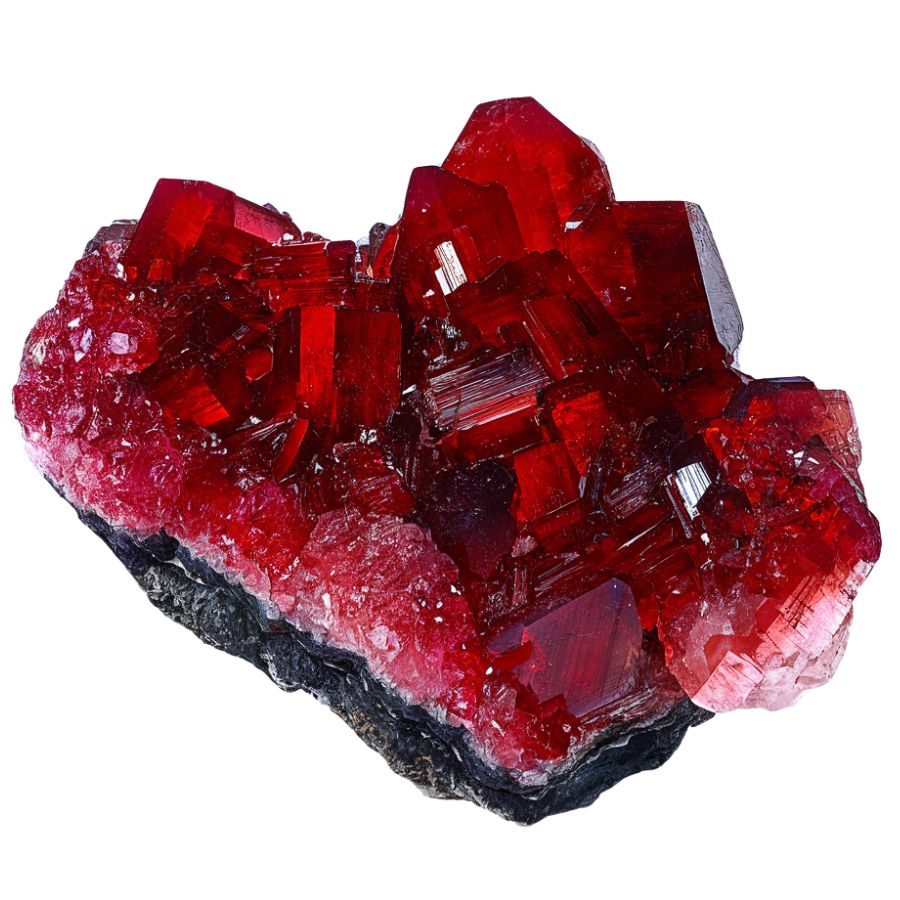
Garnet forms deep underground when rocks get squeezed and heated during metamorphism. Think of it like baking cookies – but instead of dough, you’ve got minerals like aluminum, iron, and silica getting cooked under intense pressure.
When these minerals reach temperatures around 400-700°C, they start rearranging their atoms into garnet’s distinctive crystal structure.
What’s cool is that garnets often grow by pushing other minerals out of the way! That’s why they form those perfect geometric shapes.
Most garnets need high pressure too, which is why they’re usually found in rocks that were once buried miles beneath the surface. The slower they grow, the bigger and clearer they become – some taking millions of years to reach their full size.
Types of Garnets
Garnets are captivating gemstones that showcase an impressive range of colors and varieties, each determined by their unique chemical composition. Understanding these differences helps in identifying the stone’s value.
Almandine Garnet
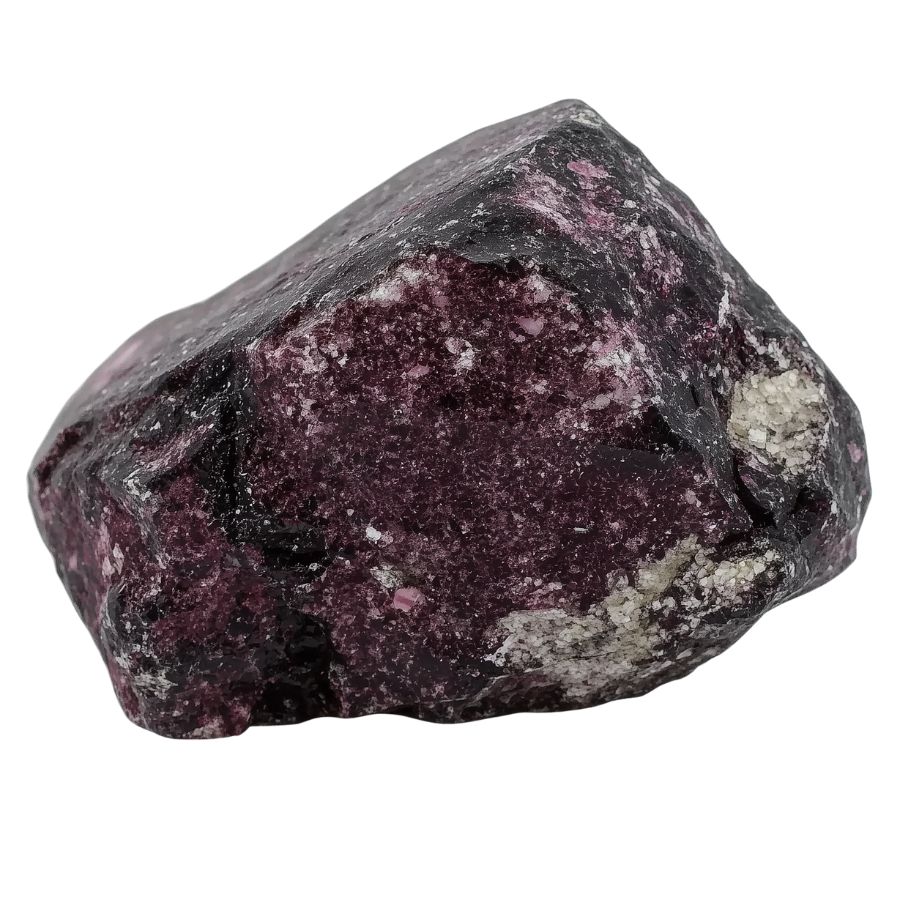
Almandine garnet stands out with its rich, deep red to reddish-brown color. The stone sometimes shows hints of orange or brown, making each piece unique. Its color intensity remains consistent throughout the stone, creating a beautiful depth that catches the eye.
The crystal structure of almandine follows a perfect cubic pattern, forming well-defined shapes with smooth faces. This symmetry contributes to its striking appearance and helps light bounce through the stone evenly.
What makes almandine special is its high iron content, which gives it a higher specific gravity than other garnets. This means it feels slightly heavier in your hand compared to similar-sized stones. Its refractive index of 1.74 to 1.83 creates excellent brilliance and fire.
Most almandine garnets are remarkably clear, though some may contain natural inclusions that create interesting patterns. These patterns can add character to the stone without affecting its overall beauty or durability.
Pyrope Garnet
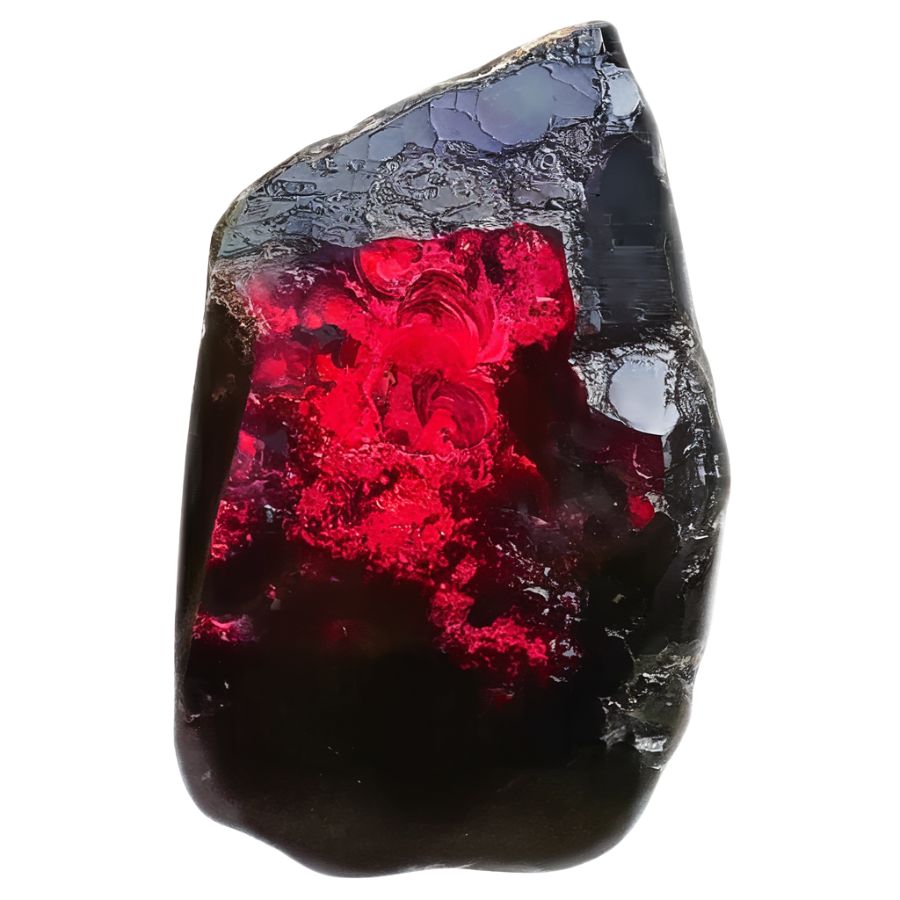
Pyrope garnet captivates with its intense red-to-purplish-red color. The color is so pure and vibrant that some specimens have earned the nickname “Cape Ruby.”
This stone has excellent clarity, rarely showing visible inclusions. When present, some inclusions can create a fascinating star effect called asterism, where a six-pointed star seems to float on the surface.
The stone appears especially vivid when cut into clean, geometric shapes that maximize light return.
Some pyropes show a subtle color shift, appearing slightly different under natural and artificial light. This subtle change adds to their charm and makes each stone unique.
Their exceptional clarity and lack of internal flaws make them particularly appealing to collectors.
Spessartine Garnet
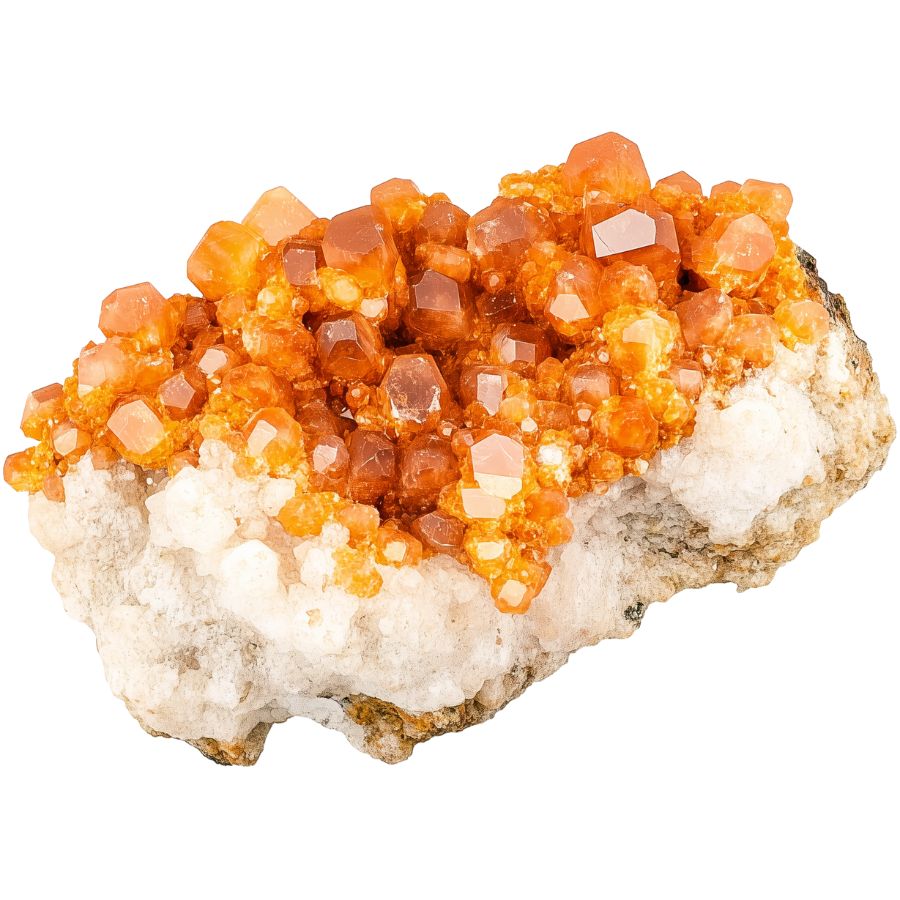
Spessartine garnet showcases a stunning range of orange colors, from bright mandarin to deep reddish-orange. The most valued pieces display a pure, vivid orange. This distinctive coloring comes from manganese in its chemical makeup.
When cut properly, spessartine exhibits bright flashes of light and exceptional sparkle. Some stones show a subtle “sugar-like” texture that creates a soft, internal glow.
Pure spessartine is rare in nature, making high-quality specimens particularly valuable. Most stones contain trace elements that create subtle color variations.
The stone’s transparency ranges from completely clear to slightly cloudy. Clear specimens are highly prized, but some collectors prefer stones with slight cloudiness that creates an interesting depth effect.
Andradite Garnet
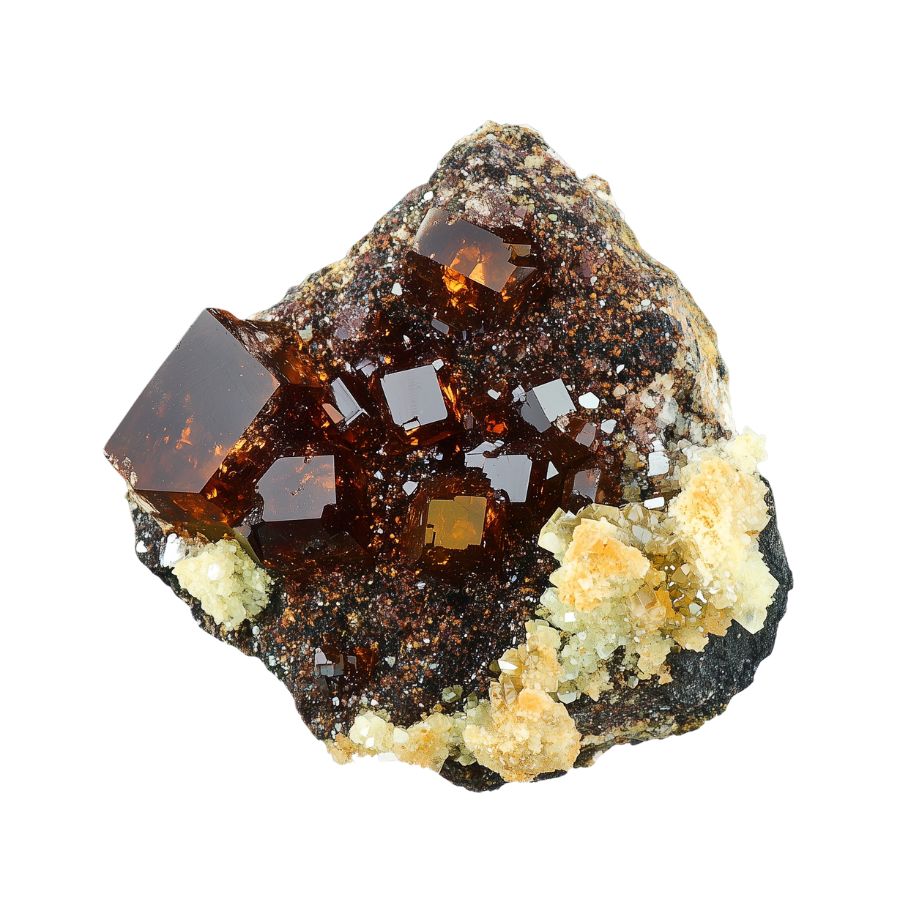
Andradite garnet displays the widest color range of all garnets. Colors span from bright green to yellow, brown, and black. The green variety, known as demantoid, is particularly treasured for its brilliant, emerald-like color and exceptional sparkle.
This stone has the highest dispersion rate of all garnets, even higher than diamond. This means it breaks light into rainbow colors more effectively, creating fascinating fire and brilliance.
Some andradite garnets contain unique internal features called “horsetail” inclusions. These fine, needle-like patterns are actually desired by collectors and add to the stone’s value.
The stone’s surface has a bright, glass-like luster that enhances its natural beauty. Some specimens exhibit unique optical features such as asterism (star-like patterns) and chatoyancy (cat’s eye effect), which further enhance their visual appeal.
Grossular Garnet
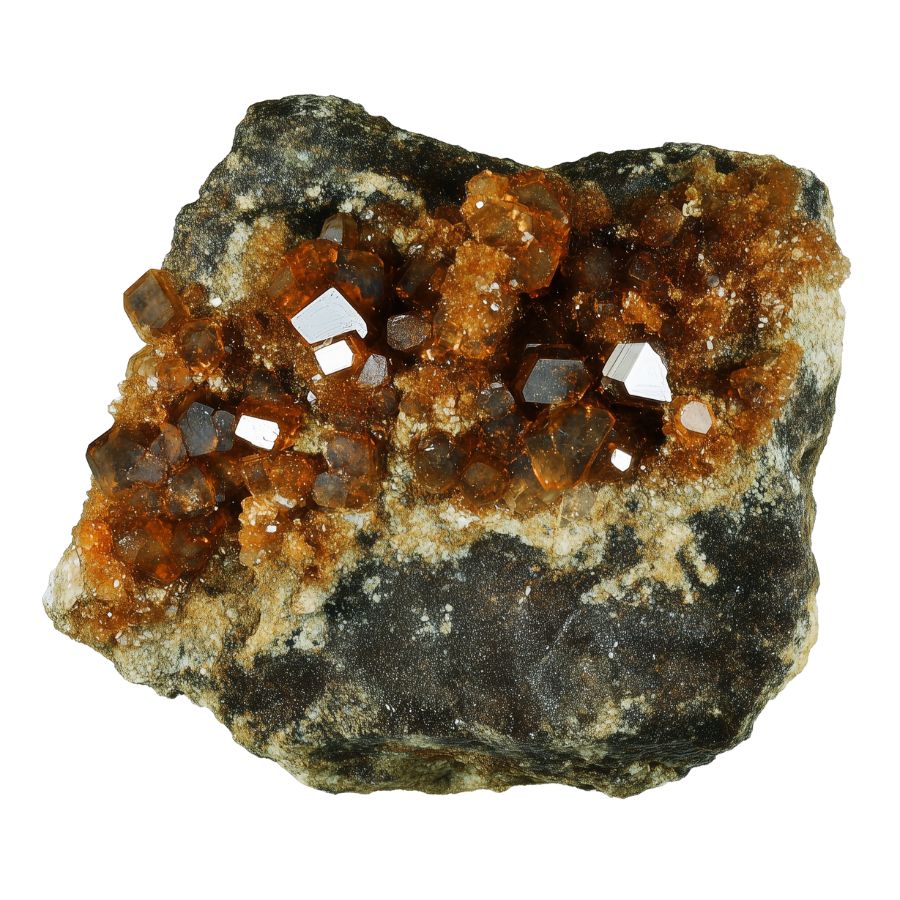
Grossular garnet comes in an amazing range of colors – from green and yellow to pink, orange, and even colorless. The most striking feature is the presence of internal swirls and streaks that create unique patterns within each stone.
The stone’s surface has exceptional brilliance that rivals expensive gems like emeralds. Light bounces through it beautifully, creating bright flashes and sparkles.
A special variety called Mint Garnet glows under ultraviolet light, creating an otherworldly effect. This unusual property makes it particularly interesting to collectors. The stone’s clarity is typically excellent, with few visible impurities.
The presence of trace elements like chromium and vanadium creates its varied colors. These elements mix in different amounts, resulting in subtle color variations that make each stone unique.
Some pieces show color zoning, where different shades blend together in distinct patterns.
Uvarovite Garnet
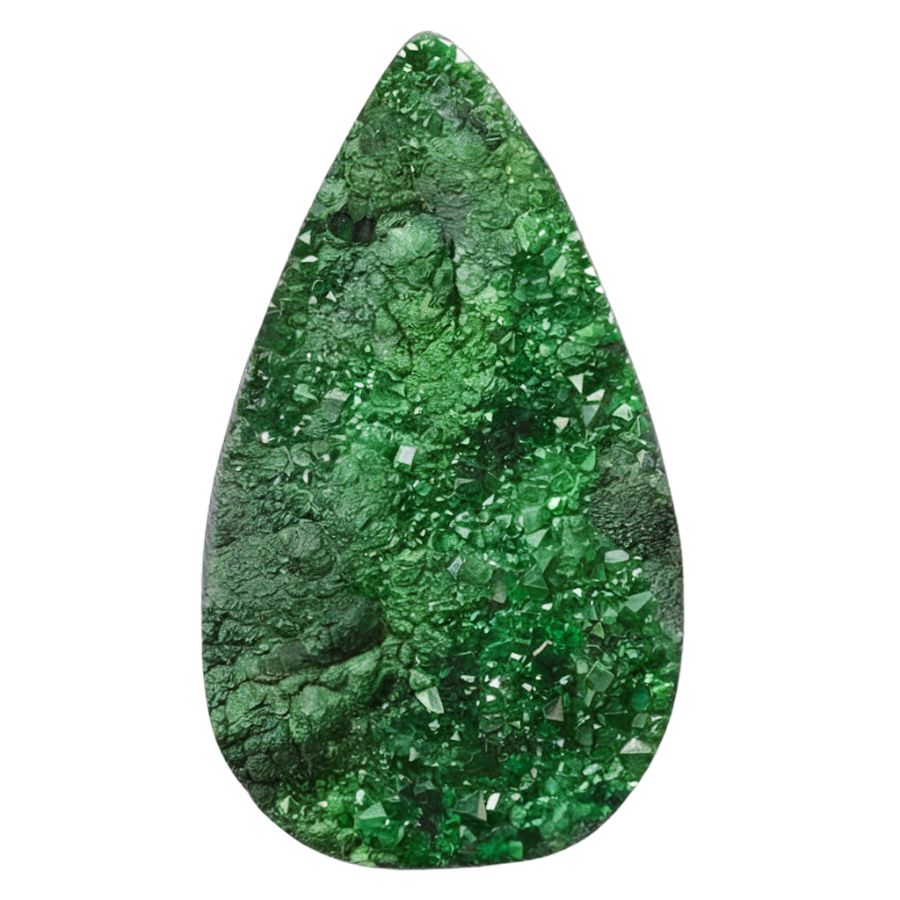
Uvarovite garnet displays a striking emerald-green color that remains consistent in all specimens. Unlike other garnets, where green hues may arise from chromium impurities, uvarovite’s green is inherent to its composition.
Instead of forming large crystals, uvarovite typically grows in clusters of tiny crystals. These clusters, called druzy, create sparkling surfaces that look like green sugar coating the rock beneath.
Under ultraviolet light, it shows an unexpected red glow, adding another layer of interest for collectors. This fluorescence is a unique feature not commonly found in other garnets.
These stones rarely grow large enough for traditional gem cutting. However, their natural crystal formations are so beautiful that they’re often left in their original state. The tiny crystals catch light from multiple angles, creating a dazzling display.
Rhodolite Garnet
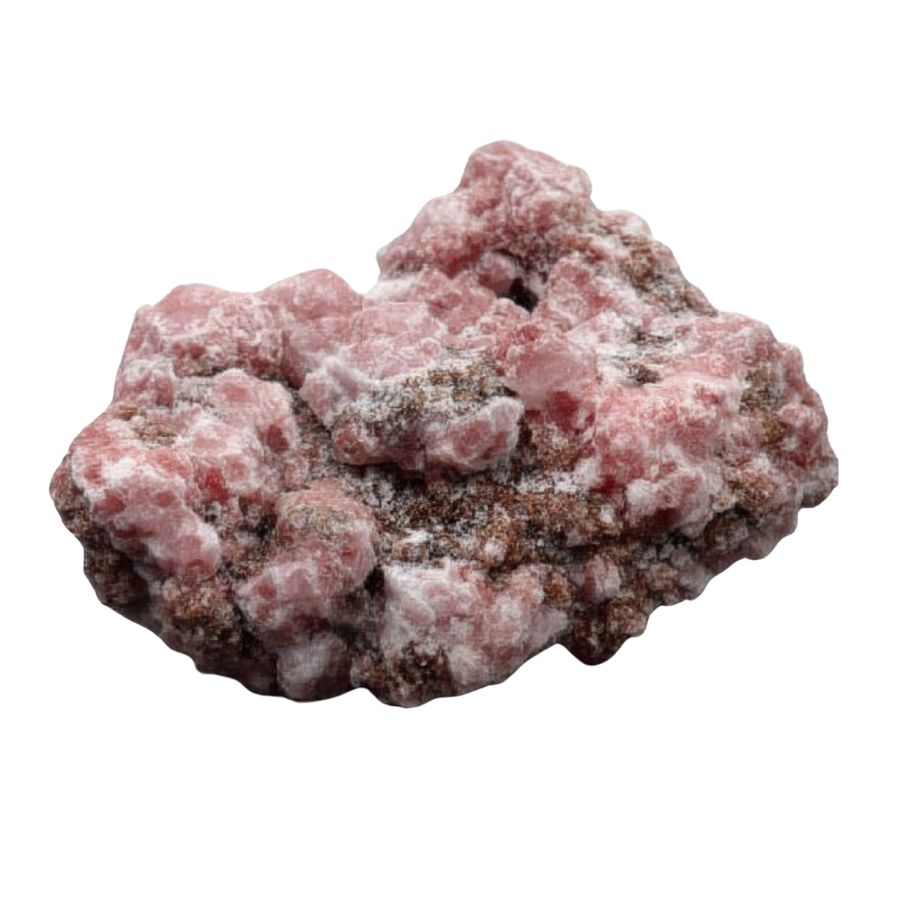
Rhodolite garnet stands out with its beautiful purple-red to raspberry-pink colors. The colors can shift between purple and red depending on the lighting, creating an interesting play of hues. This color range makes it distinctly different from the deeper reds of other garnets.
The stone’s clarity is typically excellent, with very few internal features visible to the naked eye. The surface has a glass-like shine that enhances its natural beauty.
What makes rhodolite special is its mixed composition of two different garnet types. This mixture creates its unique color range and optical properties. The stone often shows stronger color saturation in its center, fading slightly toward the edges.
Rhodolite garnet is particularly valued for its vibrant colors that can mimic more expensive gemstones like rubies and amethysts, making it a popular choice among collectors and jewelers alike.
Hessonite Garnet
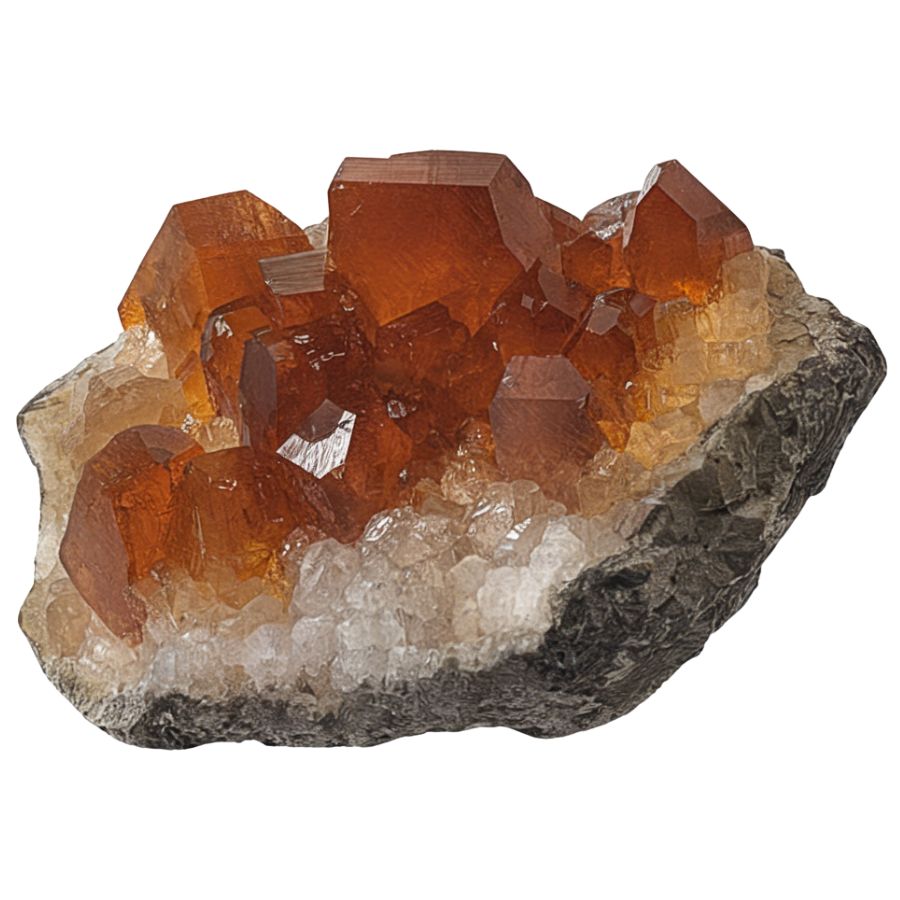
Hessonite garnet showcases warm honey-to-cinnamon colors, ranging from golden yellow to deep reddish-brown. Some pieces display hints of purple, creating complex and appealing color combinations.
Inside the stone, you might find interesting patterns created by tiny needle-like crystals. Unlike many gems where inclusions reduce the value, these internal features are appreciated in Hessonite. They create unique patterns that make each stone one-of-a-kind.
The stone’s transparency varies from crystal clear to slightly cloudy. This variation can create interesting effects, especially when light passes through the stone. Some pieces show a subtle glow that seems to come from within.
High-quality hessonite stones are relatively uncommon, especially in larger sizes. Their warm colors and unique internal features make them particularly interesting to collectors.
Tsavorite Garnet
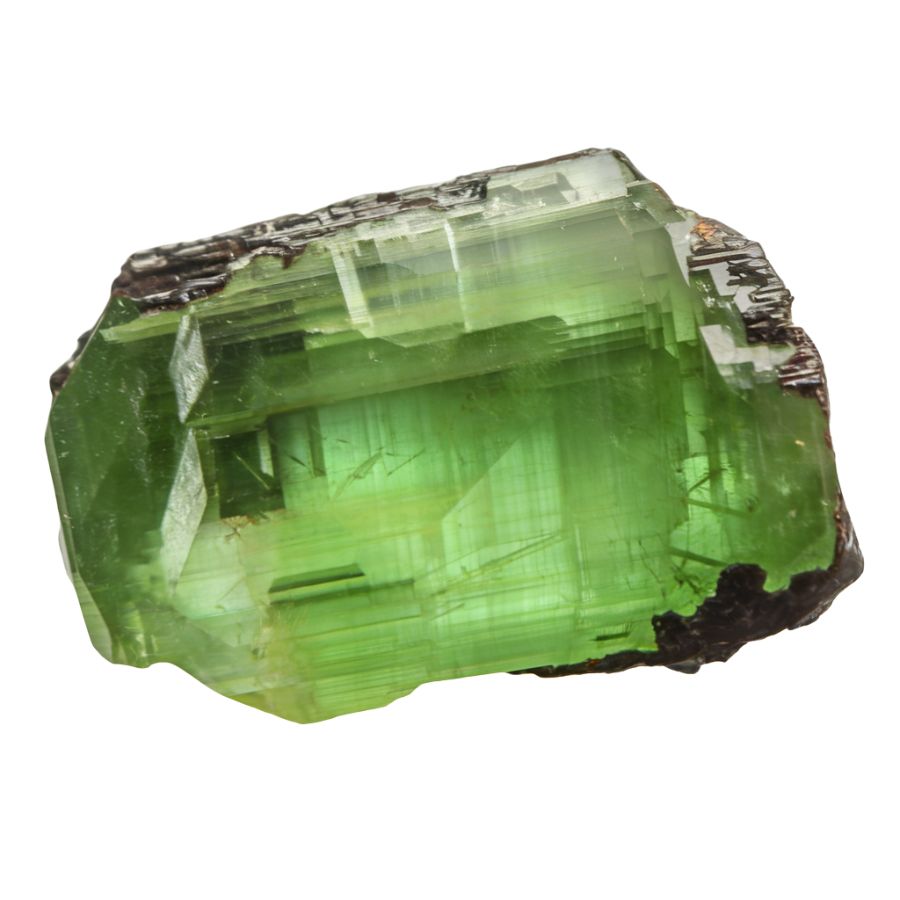
Tsavorite garnet displays a brilliant green color that ranges from bright lime to deep forest green. This stunning color comes from tiny amounts of chromium and vanadium in the stone.
The green is so pure and vibrant that it often matches or surpasses the color of fine emeralds. The surface has a glass-like shine that makes the stone look alive with movement.
Each tsavorite has its own personality in terms of color depth and brightness. Some stones show subtle color changes under different lighting, while others maintain a consistent deep green.
Star Garnet
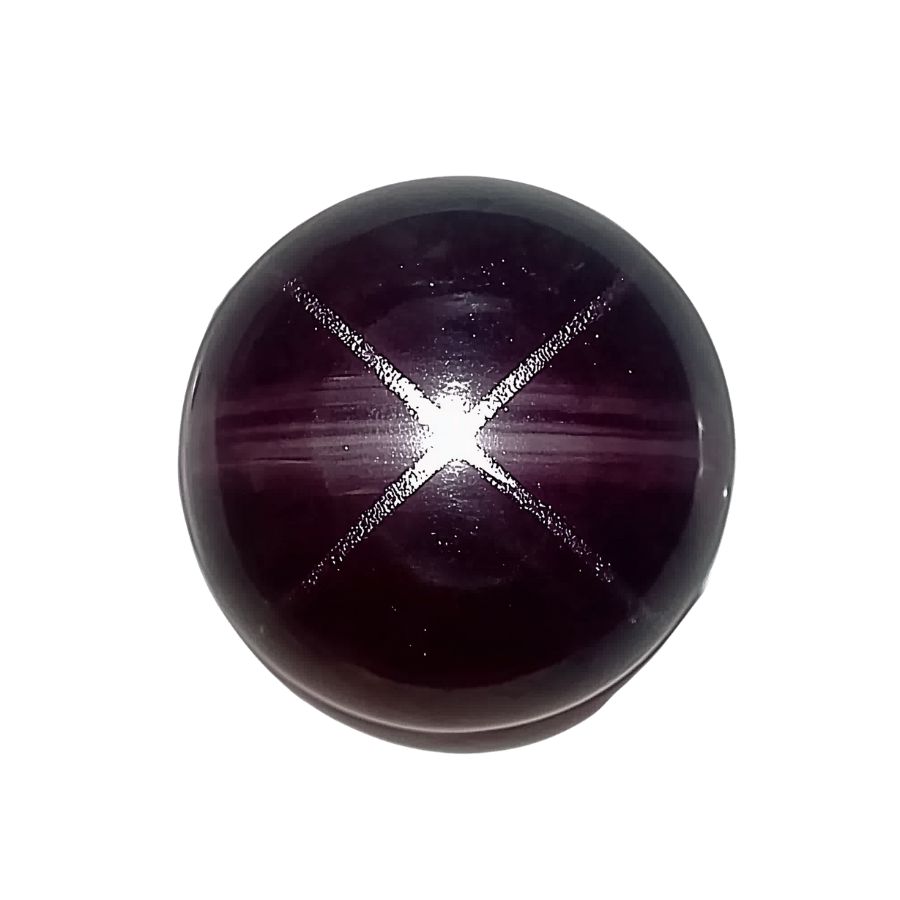
Star garnet shows a fascinating light pattern that looks like a star floating on its surface. This effect, called asterism, comes from tiny needle-like crystals inside the stone. The star usually has four or six rays that move as you turn the stone under light.
The stone’s color is typically deep red to purple-red, often with brown undertones. When polished into a smooth, rounded shape, the star effect becomes more prominent.
The best specimens show sharp, well-defined star rays against a rich, even background color. These stones are quite special because not all garnets can form stars.
The right conditions during formation must exist for the star effect to develop. The tiny crystals inside must align perfectly to create the star pattern. The star effect is natural and permanent – it won’t fade or change over time.
What Rough Garnets Look Like?
Garnets display unique identifying traits when found in their raw, natural state. Look for these distinguishing features:
Look for Distinctive Angular Shapes
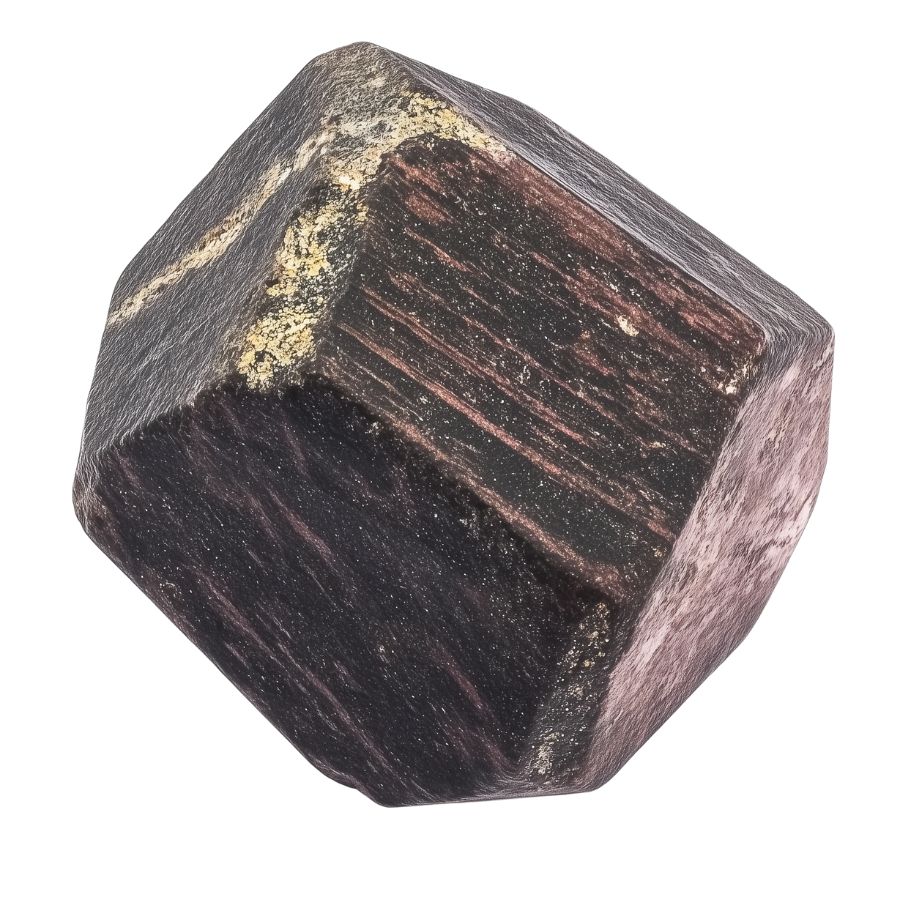
Raw garnet typically forms in dodecahedral or trapezoidal crystal shapes. Think of it like tiny, naturally-formed geometric shapes.
Unlike smooth river rocks, rough garnets have sharp edges and flat faces. Even when broken, they tend to maintain these angular patterns. You’ll often spot them as chunky, block-like crystals that look like they’ve been roughly carved.
Check the Color Range and Transparency

Garnets aren’t just red! Look for deep wine colors, but also keep an eye out for orange-brown, green, or even black varieties.
Hold it up to light – rough garnets often show some translucency at the edges, even if the center seems opaque.
Examine the Surface Texture
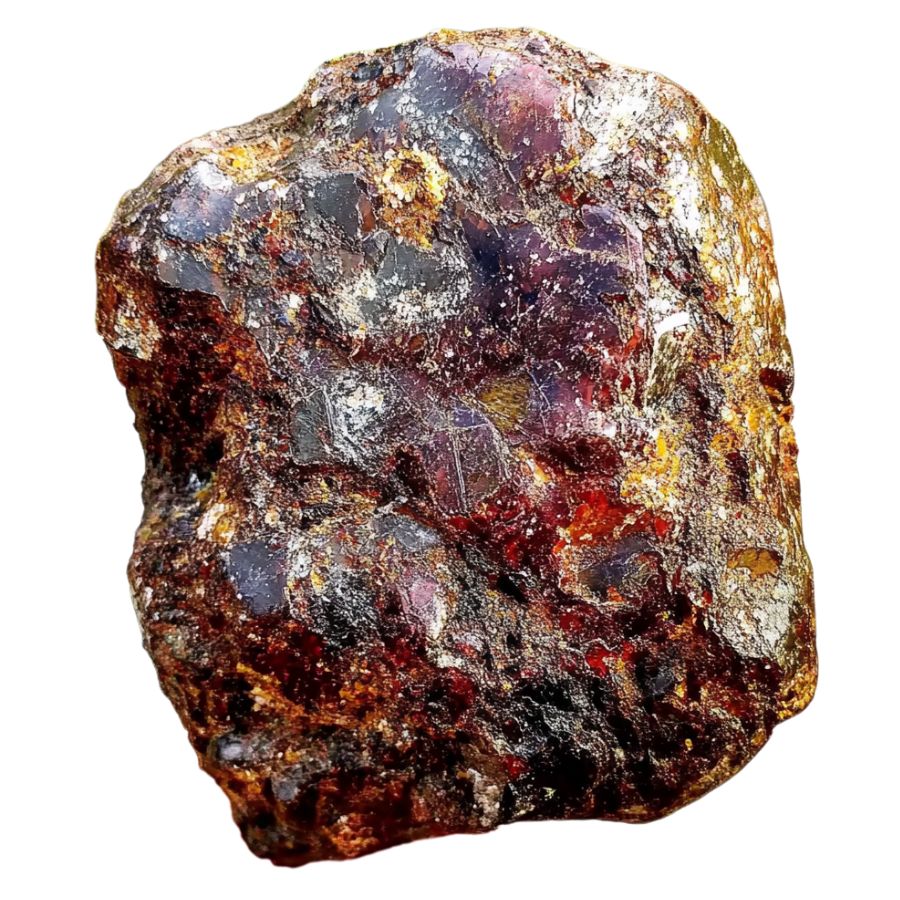
Raw garnets have this unique, almost greasy-looking surface luster. Not shiny like glass, but more like wet plastic.
Run your finger over it – you should feel a smooth yet slightly waxy texture. If it’s been weathered, the surface might be slightly pitted or rough, but you’ll still see that characteristic luster in protected areas.
Test the Hardness and Toughness
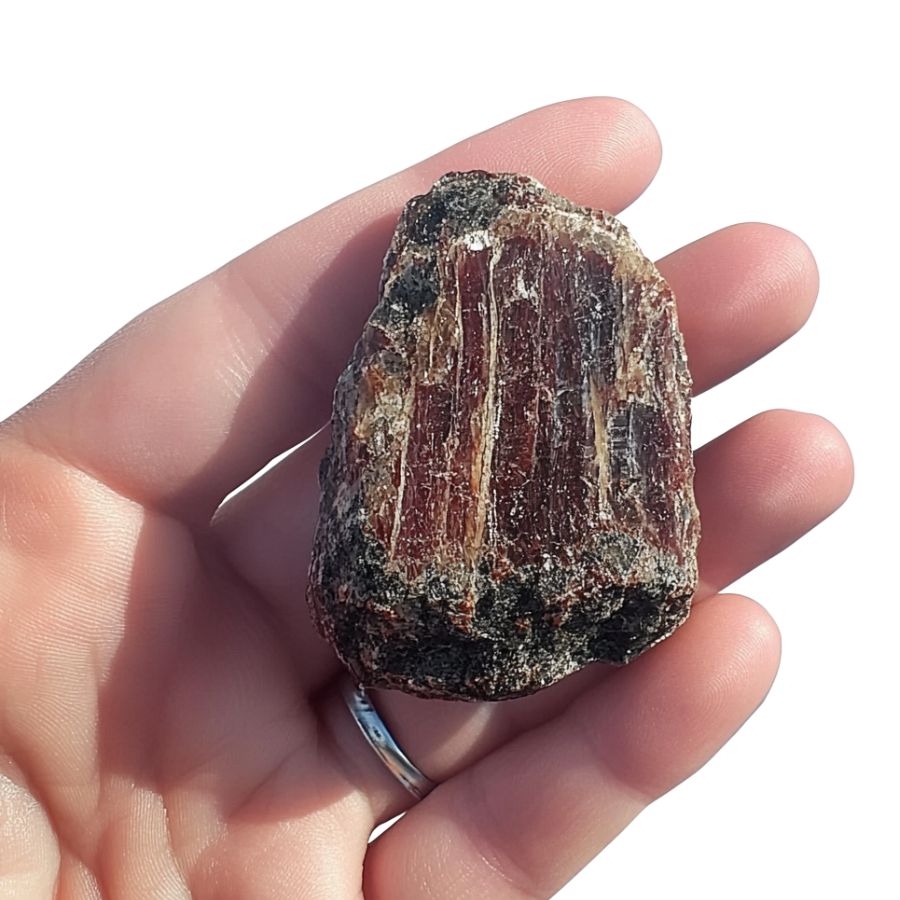
Here’s a quick field test: garnets can easily scratch a penny but won’t scratch quartz. They’re surprisingly heavy for their size – noticeably heavier than a similar-sized piece of quartz or feldspar. Don’t be fooled by lighter stones that look similar!
A Quick Request About Collecting
Always Confirm Access and Collection Rules!
Before heading out to any of the locations on our list you need to confirm access requirements and collection rules for both public and private locations directly with the location. We haven’t personally verified every location and the access requirements and collection rules often change without notice.
Many of the locations we mention will not allow collecting but are still great places for those who love to find beautiful rocks and minerals in the wild without keeping them. We also can’t guarantee you will find anything in these locations since they are constantly changing.
Always get updated information directly from the source ahead of time to ensure responsible rockhounding. If you want even more current options it’s always a good idea to contact local rock and mineral clubs and groups
Tips on Where to Look
To increase your chances of finding garnets, focus your search on these favorable areas:
Metamorphic Rock Outcrops

Look for dark-colored metamorphic rocks, especially schist and gneiss. These rocks often have visible layers or bands.
Garnets appear as dark red or brownish-red crystals embedded in the rock. Common near hiking trails and road cuts where metamorphic rocks are exposed.
Stream Beds & Gravel Banks
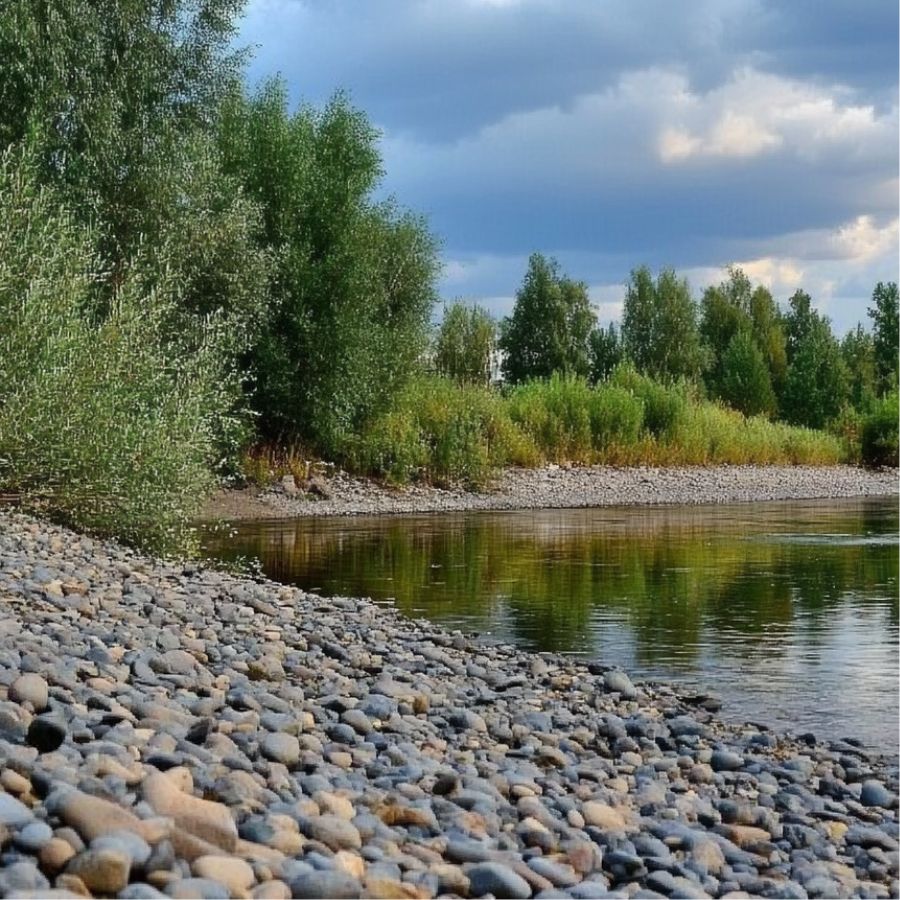
Check gravel deposits in streams, especially after heavy rains. Garnets are heavier than most minerals, so they concentrate in stream bends where water slows down.
Use a pan or sieve to sort through the gravel, keeping an eye out for the distinctive reddish crystals that glimmer when wet.
Pegmatite Areas
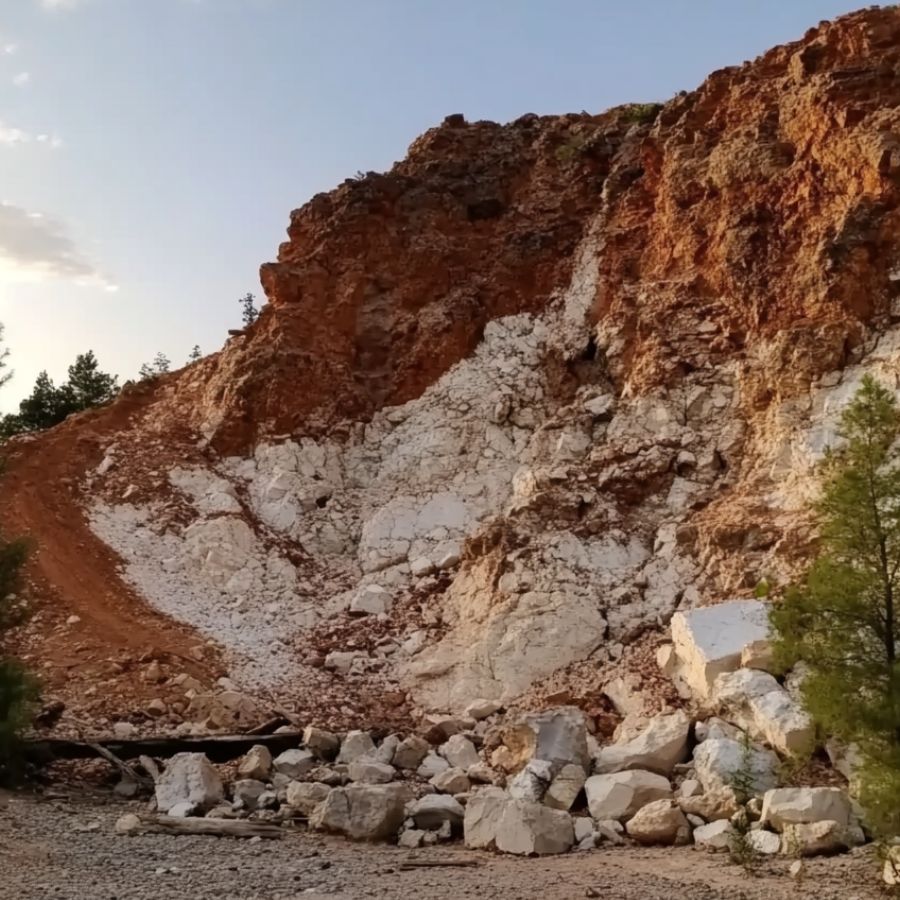
Search around pegmatite formations, which are coarse-grained igneous rocks that sometimes form large crystal pockets where beautiful garnet specimens can be found nestled among other minerals like mica and feldspar.
These areas often have scattered surface rocks and exposed cliff faces that weather over time, releasing garnet crystals.
Old Mining Areas
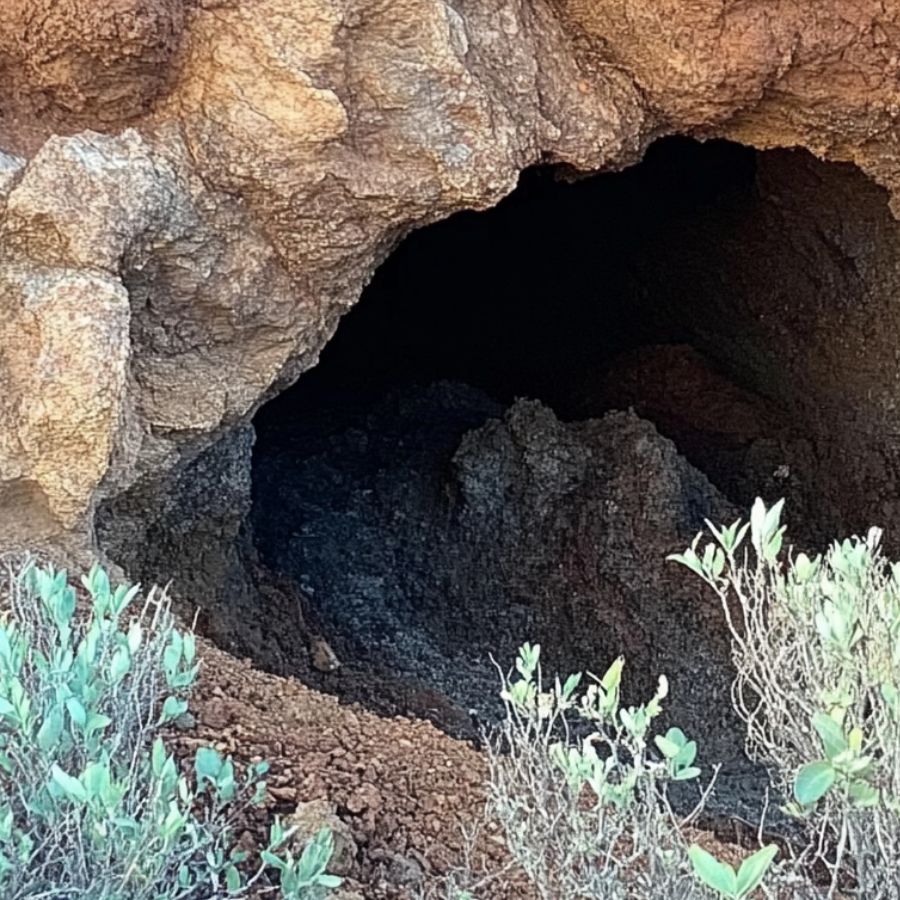
Explore permitted public mining dumps and tailings piles near historical mica or feldspar mines, where garnet was often discarded as a byproduct during past mining operations and can still be found in abundance among the leftover material.
Some Great Places To Start
Here are some of the better places in the state to start looking for garnet:
Always Confirm Access and Collection Rules!
Before heading out to any of the locations on our list you need to confirm access requirements and collection rules for both public and private locations directly with the location. We haven’t personally verified every location and the access requirements and collection rules often change without notice.
Many of the locations we mention will not allow collecting but are still great places for those who love to find beautiful rocks and minerals in the wild without keeping them. We also can’t guarantee you will find anything in these locations since they are constantly changing.
Always get updated information directly from the source ahead of time to ensure responsible rockhounding. If you want even more current options it’s always a good idea to contact local rock and mineral clubs and groups
Picuris Mountains
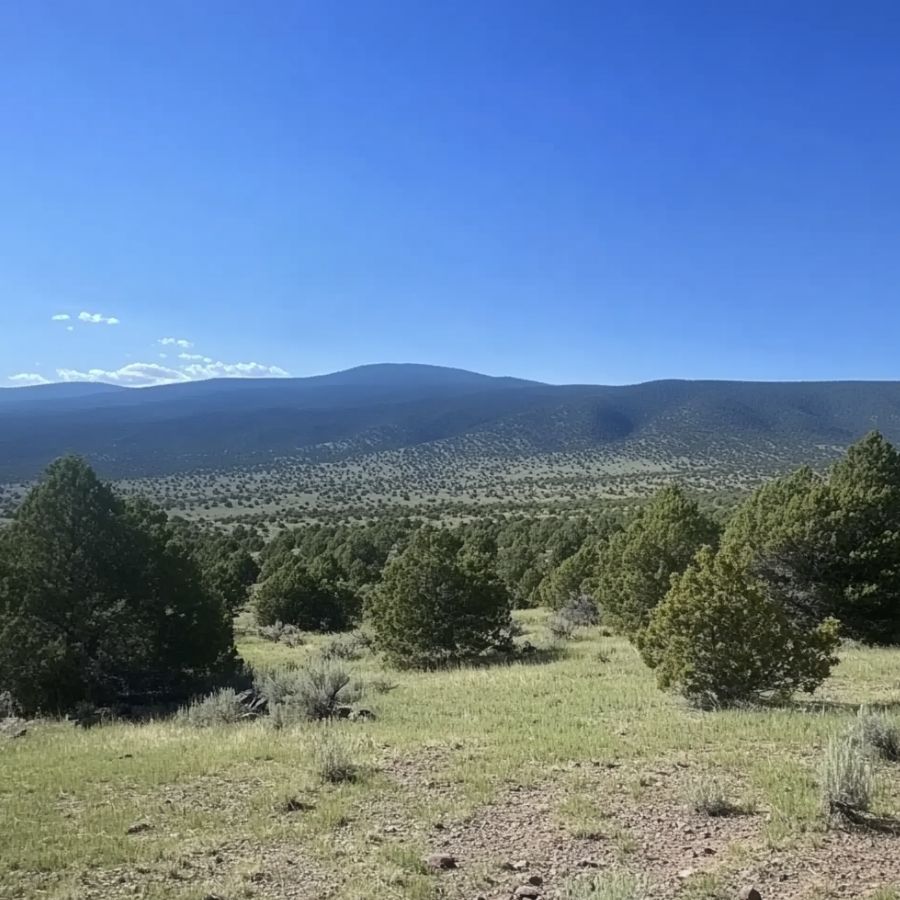
The Picuris Mountains are in the northern part of the state, stretching about 16 miles southwest from the larger Sangre de Cristo Mountains. They are home to one of the oldest communities in North America, the Picuris Pueblo. The mountains contain very old Precambrian rocks that have changed form over millions of years.
Garnet crystals can be found in the mountain’s schist rocks, especially in the Rinconada Formation. This area has garnet mixed with other minerals like staurolite, showing these rocks formed under high heat and pressure.
Hondo Canyon is a good spot for finding garnets embedded in schist and gneiss rocks. The Pilar Cliffs are another location where you can see garnet-bearing schist layers in the cliff walls.
While exploring, you might also discover the Harding Pegmatite Mine area, which has metamorphic rocks containing garnets. The mountains offer beautiful views and a chance to find these deep red minerals among ancient rocks.
Petaca District
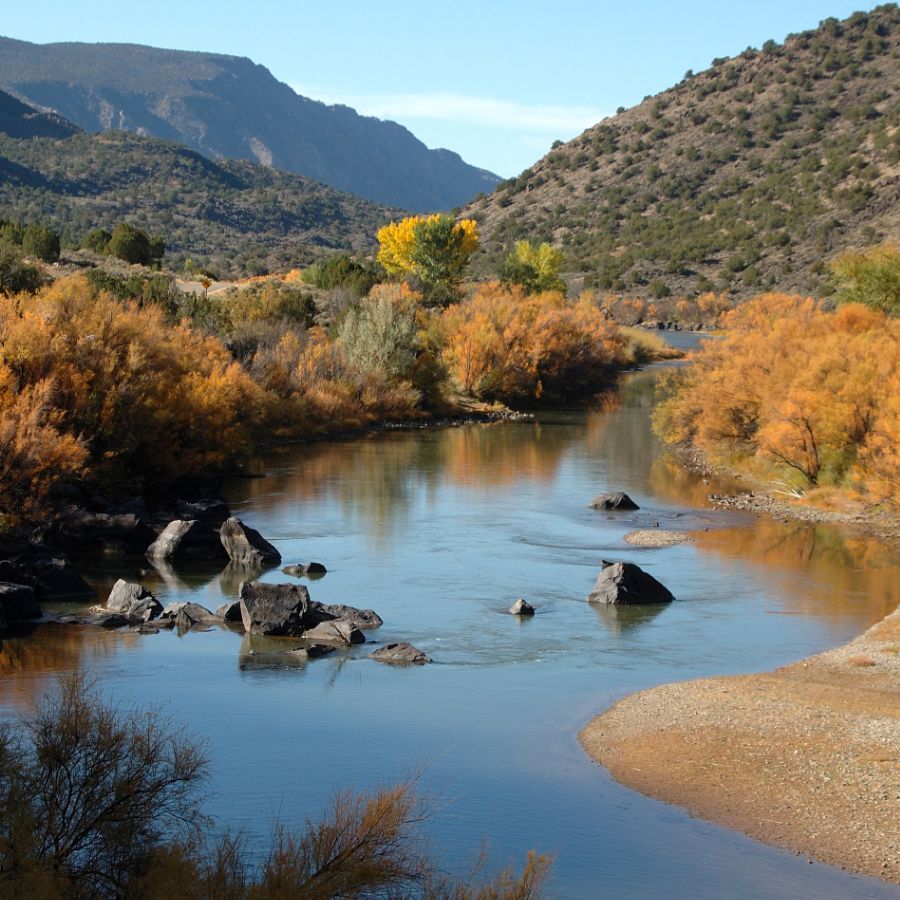
The Petaca District covers about 62 square miles in Rio Arriba County in northern New Mexico. Its rough terrain includes La Jarita Mesa and canyons formed by the Rio Tusas and Rio Vallecitos.
This area is famous for its pegmatite deposits. These pegmatites can be huge, with some stretching up to 1,500 feet long and 260 feet wide. Spessartine garnet, an orange-red variety, appears in these pegmatites as large masses and also as individual crystals in the surrounding schist rocks.
Good places to look for garnets include the Triple E Mine, Little Julia deposit, and Hillside deposit in the Alamos area of the district. Each site offers different types of garnet specimens.
Rock collectors value these garnets for their distinct crystal shapes and for how they appear alongside other interesting minerals. The district’s long mining history adds to its appeal for mineral enthusiasts exploring this rugged landscape.
Capitan Mountains
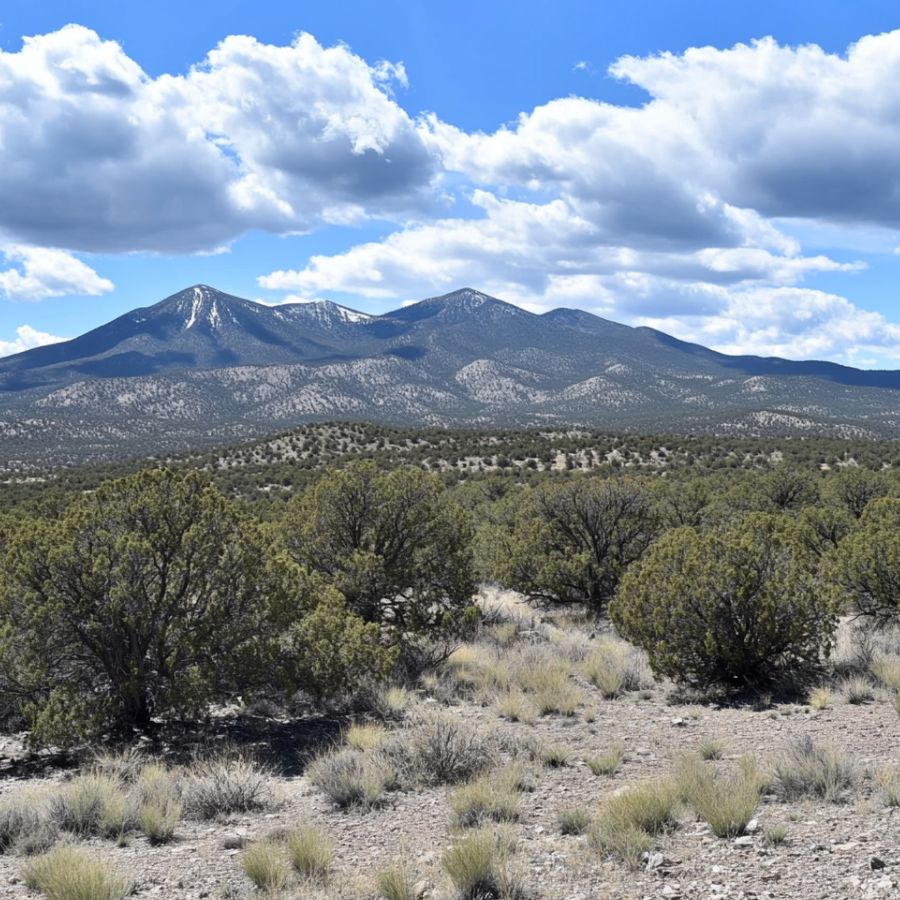
The Capitan Mountains run east to west for about 22 miles in Lincoln County. They stand between 5-8 miles wide and reach heights over 10,200 feet. These mountains are part of Lincoln National Forest and hold special fame as the place where firefighters rescued Smokey Bear during a 1950 wildfire.
Grossular garnets formed in tactite zones, areas where the hot magma met limestone rocks. These garnets typically appear in contact zones where different rock types meet.
Smokey Mine in the mountains has iron ore deposits where garnets might be found. Another spot is Mina Tiro Estrella (Shooting Star Mine), which you can reach by taking Highway 380 east from the town of Capitan.
While searching for garnets, you might also find other minerals like topaz, smoky quartz, and fluorite. The mountains’ pine forests make a beautiful setting for rock collecting adventures.
East Grants Ridge
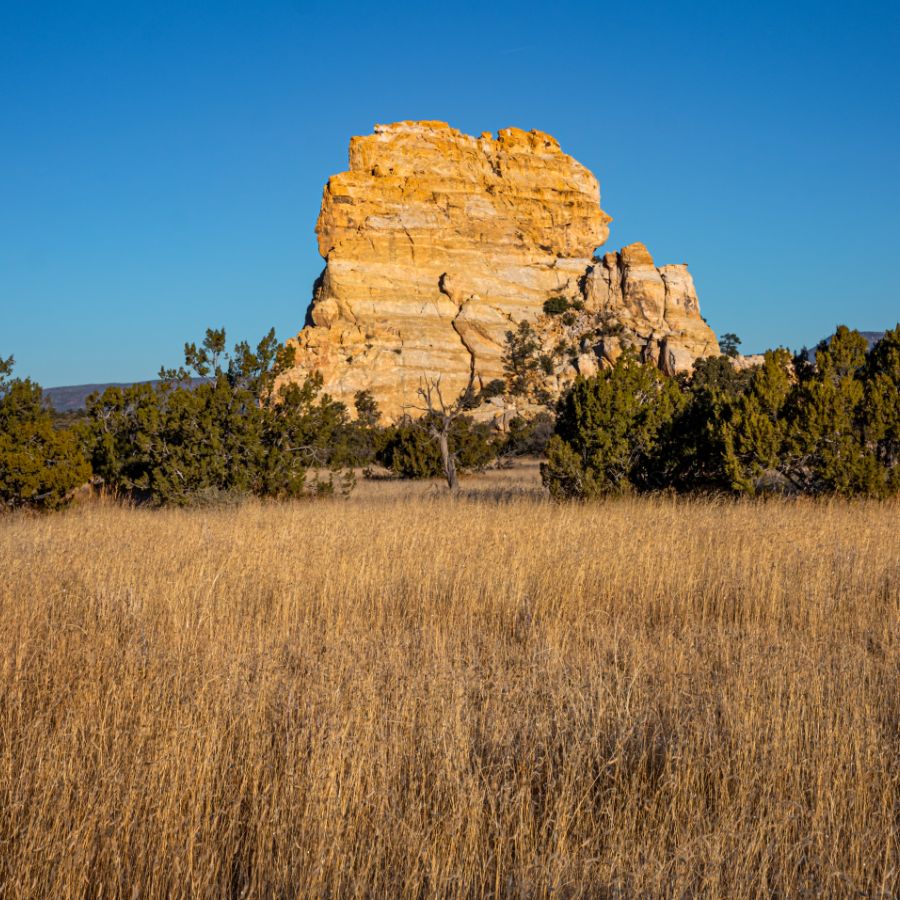
East Grants Ridge sits northeast of Grants town within the Mount Taylor volcanic field. You can reach this rocky area by driving on Lobo Canyon Road. Volcanic activity long ago created the special rhyolite tuff rock formations found here. These rocks formed when volcanic ash settled and hardened.
What makes East Grants Ridge exciting for mineral collectors are the small hollow spaces called lithophysae in the rhyolite. These little cavities formed when gas bubbles got trapped in cooling lava. Spessartine garnets, which show colors from red to brown, hide inside these bubble-like spaces in the rock.
Though small, these garnets often have well-formed crystal shapes that collectors prize. To find them, look closely at the rhyolite outcrops along Lobo Canyon Road. Careful breaking of the rock may reveal garnet crystals inside the round cavities.
Red River District
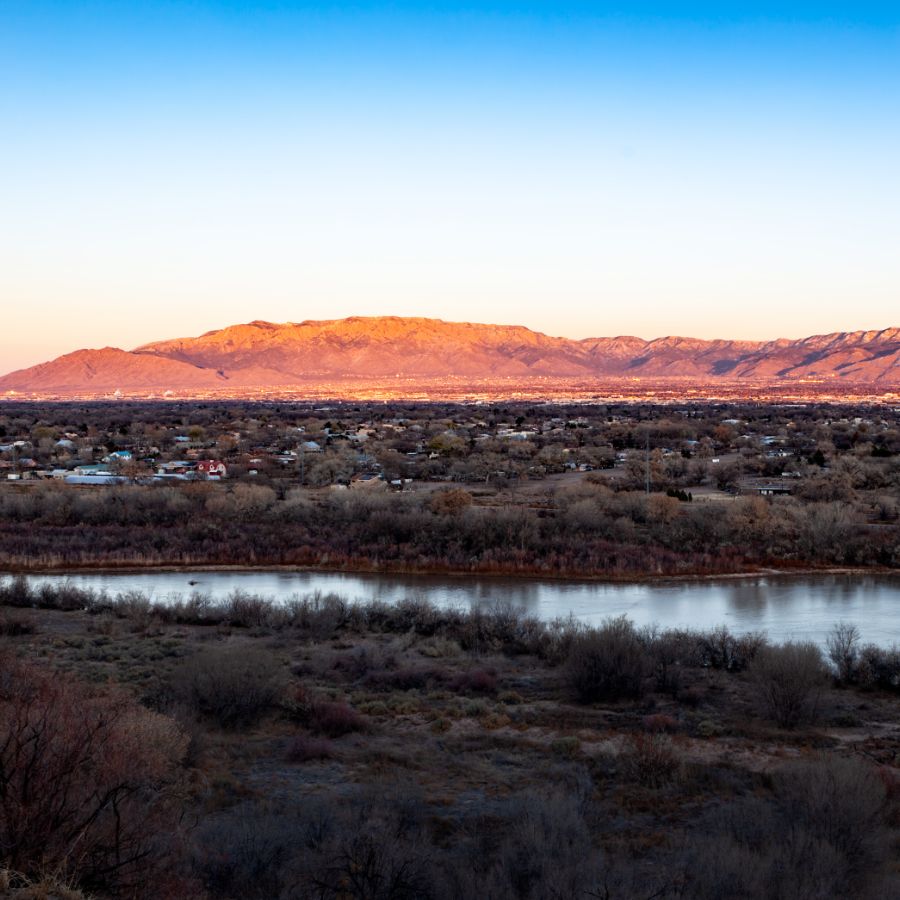
The Red River District covers about 75 square miles in Taos County within the beautiful Sangre de Cristo Mountains. State Highway 38 winds through Red River Canyon to the town of Red River, which sits at a high elevation between 8,500 and 12,600 feet. Cold winters and cool summers mark this mountain area.
Really old rocks from the Precambrian period make up much of the district. These include hornblende gneiss, quartz mica schist, quartzite, and amphibolite. Later, pink granite pushed into these older rocks.
Pioneer Creek north of the Midway claims offers good spots to find garnets in schist rocks along the water. Gold Hill, south of Red River town, has metamorphic rock outcrops where garnets have been found.
Bitter Creek, northeast of town, might contain garnets in its gravels, especially where metamorphic rocks appear upstream. The district’s mining history adds to its appeal for rockhounds seeking these red treasures.
Places Garnet has been found by County
After discussing our top picks, we wanted to discuss the other places on our list. Below is a list of the additional locations along with a breakdown of each place by county.
| County | Location |
| Taos | Harding Pegmatite Mine |
| Taos | Rinconada Formation |
| Grant | Hanover-Fierro District |
| Grant | Continental Open Pit |
| Otero | Orogrande District |
| Sierra | Black Range Minerals Area |
| Doña Ana | North Organ Mountains |
| Socorro | Quebradas Back Country Byway |
| Socorro | Blanchard Mine |
| Socorro | Magdalena Mountains |
| Grant | Burro Mountains |
| Taos | Tres Piedras District |
| Taos | Red River District |
| Mora | Mora County Schists |
| San Miguel | San Miguel County Schists |
| Lincoln | Gallinas Mountains |
| McKinley | Zuni Mountains |
| Socorro | Chupadera Mountains |
| Doña Ana | San Andres Mountains |
| Otero | Sacramento Mountains |
| Hidalgo | Peloncillo Mountains |
| Luna | Florida Mountains |
| Luna | Cookes Range |
| Luna | Tres Hermanas Mountains |
| Luna | Victorio Mountains |
| Hidalgo | Animas Mountains |
| Hidalgo | Pyramid Mountains |
| Catron | San Francisco Mountains |
| Catron | Mogollon Mountains |
| Socorro | Datil Mountains |
| McKinley | Gallup Area |
| Cibola | Grants Area |
| Cibola | Mount Taylor |
| Cibola | Bluewater Area |
| Cibola | Acoma Pueblo Area |
| Cibola | Laguna Pueblo Area |
| Sandoval | Jemez Mountains |
| Sandoval | Valles Caldera |
| Los Alamos | Los Alamos Area |
| Los Alamos | White Rock Canyon |
| Rio Arriba | Abiquiu Area |
| Rio Arriba | Ghost Ranch |
| Rio Arriba | Chama River Canyon |
| Santa Fe | Española Area |
| Santa Fe | Cerrillos Hills |
| Santa Fe | Galisteo Basin |
| Bernalillo | Sandia Mountains |
| Torrance | Manzano Mountains |
| Torrance | Estancia Basin |
| Lincoln | Carrizozo Malpais |


